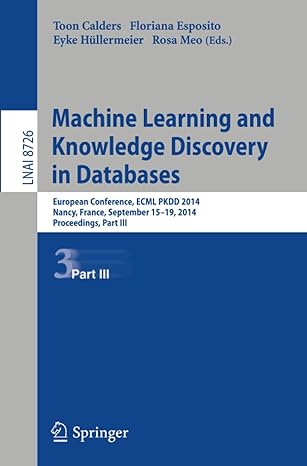Question
1. Given two languages P = {ab, ba} and Q = {xy, z} , calculate: a) The language resulting from the concatenation of P and
1. Given two languages P = {ab, ba} and Q = {xy, z} , calculate: a) The language resulting from the concatenation of P and Q, i.e., PQ and QP b) P^0 c) Q3^3 2. For the following languages, give a regular expression for the set of strings over {a,b} that: a) contain both the substring ab and ba b) have length of 2 or more, and in which any and all as precede any and all bs c) have an odd number of bs d) do not contain the substring aaa 3. (Generate a regular expression for the language {a^n | n mod 2 = 1} 4. For the context-free grammar G : S->aS|Sb|a a) Give a derivation for the string aaabb b) Give a derivation tree for the above string c) Write a regular expression for G
Step by Step Solution
There are 3 Steps involved in it
Step: 1

Get Instant Access to Expert-Tailored Solutions
See step-by-step solutions with expert insights and AI powered tools for academic success
Step: 2

Step: 3

Ace Your Homework with AI
Get the answers you need in no time with our AI-driven, step-by-step assistance
Get Started


